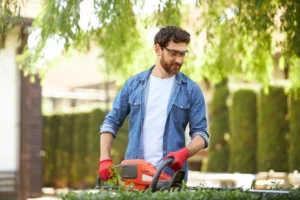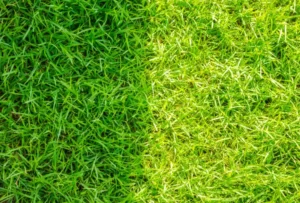Hardscape installation is a great way to improve your outdoor space while adding value and function to your home. It uses non-living materials like stone, concrete, wood, and metal to create strong and attractive outdoor areas. You can build a patio, a walkway, or even an outdoor kitchen with hardscaping. In this article, we’ll share the best hardscape ideas and simple tips to help you plan and maintain your outdoor space.
What is Hardscape Installation?
Hardscape installation refers to the process of adding solid, non-plant-based features to your outdoor space. It includes the use of materials like pavers, stones, bricks, concrete, wood, and metal to create structures such as patios, walkways, retaining walls, and outdoor kitchens. Hardscaping works alongside softscaping (the planting of trees, shrubs, and flowers) to complete the overall Bay area landscaping design.
Benefits of Hardscaping
Hardscaping offers several benefits for homeowners. From aesthetic appeal to improved property value, these outdoor installations are highly versatile and functional.
Aesthetic Appeal
Hardscaping can transform a bland yard into a stylish outdoor living area. Materials like stone, concrete, and wood add texture and visual interest. Whether you want to create a rustic ambiance or a sleek, modern look, hardscaping gives you the tools to express your style.
Increases Property Value
Properly designed and installed hardscaping features can increase the value of your home. A well-built patio or an outdoor kitchen can become a key selling point for potential buyers, adding both beauty and functionality to your property.
Low-Maintenance
While lawns and gardens require regular upkeep, hardscaping materials such as patios, walkways, and retaining walls require minimal maintenance. This makes them an ideal option for homeowners looking for a low-maintenance outdoor space.
Improves Functionality
Hardscaping makes your outdoor area more usable. Features such as pathways and patios help define spaces for outdoor entertaining, while outdoor kitchens and fire pits provide comfort and functionality for gatherings.
Popular Hardscape Installation Ideas
There are numerous hardscaping features to consider when enhancing your outdoor space. Here are some popular hardscape installation ideas to get you started:
Patios and Outdoor Living Spaces
Patios are one of the most popular hardscaping features for homeowners looking to create an outdoor living space. A well-designed patio can become an extension of your home, offering a comfortable spot for dining, lounging, or hosting parties. Using materials like pavers, stone, or concrete, you can design a patio that complements your home’s aesthetic. Add a seating area, some outdoor furniture, and soft lighting to create the perfect outdoor retreat.
Walkways and Pathways
Walkways and pathways are not only practical but can also enhance the flow of your outdoor space. Whether connecting your driveway to your front door or leading you through your garden, pathways help define areas and provide safe routes. Materials such as flagstone, cobblestones, or decorative pavers can be used to create beautiful paths that blend with the surrounding landscape.
Fire Pits and Outdoor Fireplaces
Adding a fire pit or outdoor fireplace to your hardscape installation can create a cozy and inviting atmosphere. Fire features are perfect for year-round use, allowing you to gather with family and friends for warmth and ambiance. They also serve as a focal point for your outdoor space, complementing other hardscaping elements like patios and seating areas.
Water Features
Water features like fountains, ponds, and waterfalls are an excellent way to bring a touch of tranquility and elegance to your hardscape design. The sound of running water can create a peaceful ambiance, while the visual appeal of flowing water adds movement and beauty. Whether integrated into your garden or as a standalone feature, water elements enhance the overall aesthetic of your outdoor space.
Retaining Walls
Retaining walls are essential for managing soil erosion and creating level surfaces in sloped yards. These walls also serve as a design element, providing visual interest and structural support. Whether you use stone, brick, or concrete, a retaining wall can help transform a sloped area into a functional and visually appealing space.
Outdoor Kitchens and Dining Areas
For those who love to entertain, an outdoor kitchen is a dream come true. Incorporating features like a grill, sink, countertop space, and even a refrigerator, outdoor kitchens allow you to cook and dine outside. Pair your outdoor kitchen with a dining area, and you’ll have the perfect spot for family meals and social gatherings.
Planning for Hardscape Installation
Planning is a crucial part of any successful hardscape installation. Here’s how to approach the process:
Define Your Goals: Before starting, think about how you want to use your outdoor space. Are you looking to create a relaxing retreat, a space for entertaining, or a practical area for gardening? Defining your goals will help you choose the right features for your yard.
Choose Your Materials: Selecting the right hardscaping materials is key to the overall look and feel of your space. Consider options such as pavers, bricks, concrete, or natural stone for a durable and attractive finish. Match the materials to your home’s style for a cohesive look.
Consider the Layout: The layout of your hardscaping features should complement the natural flow of your property. Work with a professional hardscape installer to design an arrangement that maximizes your space and enhances the functionality of the area.
Step-by-Step Process of Hardscape Installation
Here’s an overview of the typical hardscape installation process:
Site Preparation: The first step is to prepare the area for installation. This involves clearing the site of vegetation, leveling the ground, and ensuring proper drainage.
Laying the Foundation: The next step is to lay the foundation. This often involves adding a layer of gravel or sand to create a stable base for the hardscaping materials.
Installing the Hardscape Materials: Once the foundation is in place, the chosen materials (pavers, stones, or bricks) are laid down. This is where the design starts to take shape.
Finishing Touches: After the materials are installed, finishing touches such as filling in gaps, compacting the surface, and sealing the materials are added to ensure durability and aesthetic appeal.
Costs of Hardscape Installation
The cost of hardscape installation varies based on the size of the project, the materials chosen, and the complexity of the design. On average, installing a paver patio or stone walkway can cost between $10 to $30 per square foot, including labor and materials. More complex features like outdoor kitchens, water features, and retaining walls can increase the cost significantly.
It’s important to get quotes from multiple hardscape installers to ensure that you’re getting a fair price. Be sure to budget for both the materials and labor when planning your hardscape project.
Maintenance and Care for Hardscapes
Hardscapes require minimal maintenance compared to lawns and gardens, but some upkeep is still necessary to keep them looking their best.
Regular Cleaning and Upkeep Tips
Regular cleaning is essential for maintaining the appearance of hardscapes. Sweep away debris, clean stains, and rinse surfaces with a garden hose to prevent dirt buildup. For stone and brick surfaces, use a pressure washer for a deep clean.
Seasonal Maintenance
Certain hardscaping materials require seasonal maintenance. For example, sealing stone and paver patios every 1-2 years will help protect them from the elements. During colder months, check for any shifting or cracking and repair them as needed.
Avoiding Common Hardscape Issues
Cracking and shifting are common issues that can arise over time, especially with pavers and concrete. Make sure to work with a reputable installer who uses quality materials and installs them correctly to prevent these issues from occurring.
Benefits of Professional Hardscape Installation
While DIY projects are tempting, professional hardscape installers bring valuable expertise to the table. They can help with design, layout, and material selection, ensuring your installation is done right the first time. Professionals also have the tools and knowledge to handle complex tasks like grading, drainage, and intricate designs. Investing in professional hardscape installation ensures that your project will be both aesthetically pleasing and durable.
Common Hardscape Installation Mistakes to Avoid
Some common mistakes to avoid during hardscape installation include:
Improper Drainage: Poor drainage can lead to water pooling and damage to hardscaping materials.
Incorrectly Prepared Base: A weak or improperly compacted base can lead to shifting and uneven surfaces.
Using Low-Quality Materials: Cheap materials may not withstand the test of time and weather, leading to cracks and deterioration.
Working with a skilled hardscape installer can help you avoid these pitfalls.
Conclusion
Hardscape installation is a fantastic way to enhance your outdoor space while adding value and functionality to your property. From patios and walkways to outdoor kitchens and fire pits, the possibilities are endless. With careful planning, the right materials, and professional installation from Lakota Design Group, you can create an outdoor living space that’s both beautiful and functional. Whether you’re looking to increase curb appeal, create a relaxing retreat, or improve your home’s functionality, Lakota Design Group can bring your hardscaping vision to life.
FAQS
What is hardscape installation?
Hardscape installation involves adding non-living elements like stone, concrete, wood, and metal to outdoor spaces, such as patios, walkways, and retaining walls.
How does hardscaping improve my home?
Hardscaping enhances your outdoor space by adding beauty, functionality, and value, making it more durable and low-maintenance compared to traditional landscaping.
What are some popular hardscaping features?
Common hardscape features include patios, walkways, fire pits, retaining walls, water features, and outdoor kitchens, all of which enhance outdoor living.
How much does hardscape installation cost?
The cost varies based on materials and project size, but a basic patio or walkway typically costs between $10 to $30 per square foot, including labor.










